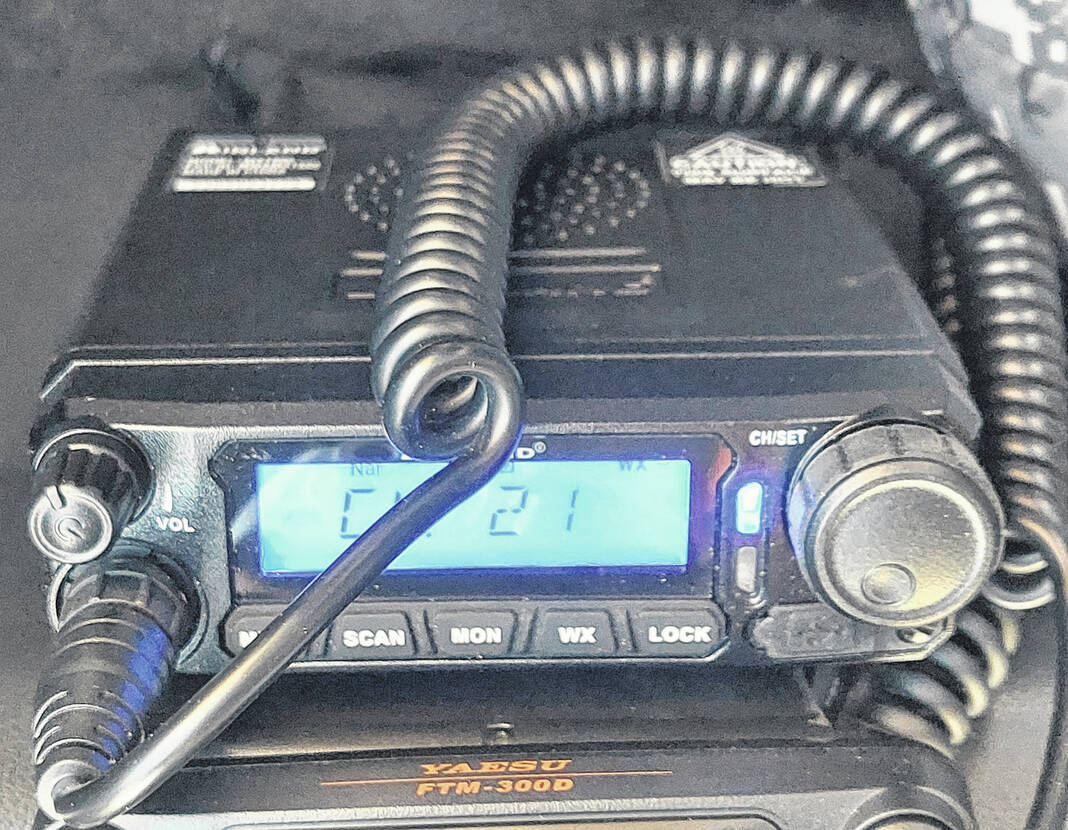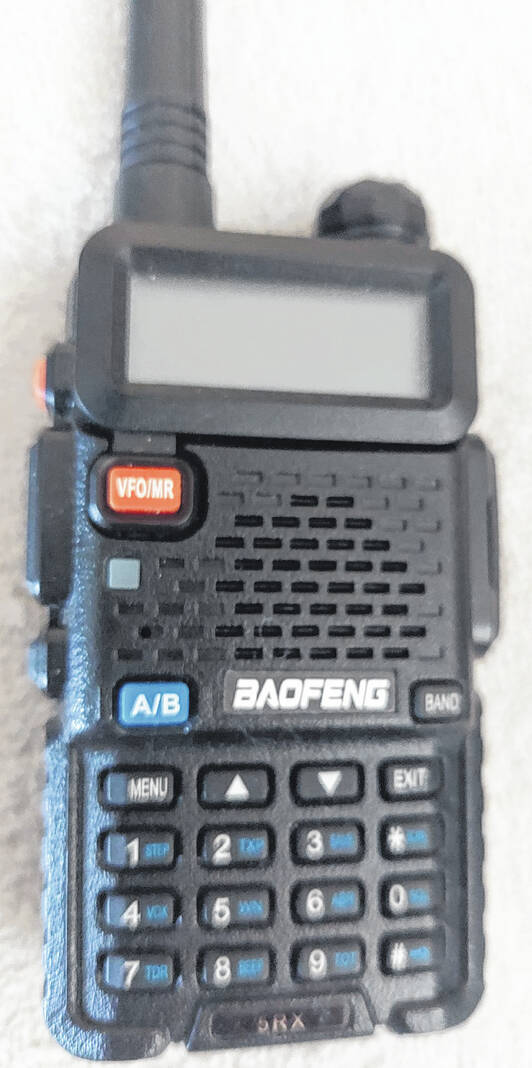
This is a standard vehicle installed GMRS radio powered by the car’s electrical system.
Gail Allen | R-H photos

This is a sample of a handheld GMRS radio for portable use that can be used in various areas of the city or state.
Have you experienced a cell phone outage in the past few months? A disruption in service recently affected the AT&T network, for example.
The answer is yes for a multitude of customers. Cellular network signals can be interrupted by events like storms, heavy winds, wildfires, like in Texas and California, and many other states. Cell towers are also vulnerable to cyber attacks. There is an alternative to personal communication in case this happens.
Dr. John Nestor, of Washington Court House, realized the need for local backup communication when cell phone services are not functioning. “We are overly dependent on the cell phone, at least for local communications,” Nestor said.
He discovered that other communities, such as West Chester near Cincinnati, and others are promoting the optional General Mobile Radio Service (GMRS) two-way radio for local family connections.
Public safety services have a robust communication system with their radio and antenna equipment. Citizens do not. Cell phones and the internet are dominant, but a proven point of failure due to routine disruptions or disasters.
Some local government officials admit they have no contingency plan for local family communications in cases of disruptions, Nestor said. Some communities are now installing “repeaters” on government-owned antenna towers to boost residents’ GMRS mobile radio range in their communities.
Nestor said that FEMA has recommended communities establish a local low-tech communication option that is not overly dependent on infrastructure. GMRS is a local solution, similar to Citizen Band (CB) radios, but more powerful and regulated by the FCC. Like CB’s, GMRS radios have their own set channels and can be used anywhere in the United States as long as you are in range of another user.
GMRS two-way radios only require an FCC 10-year license for $35, obtainable on the FCC website, for 18 years and older, no exams or special training needed. GMRS is strictly for family and personal use. Organizations and businesses cannot obtain a GMRS license.
Nestor contacted the FCC and learned that a government agency can fund and install a GMRS repeater to boost the range for citizens as long as it is registered in the name of a licensed individual GMRS user, for example, a city or county employee with a GMRS license.
There are no monthly fees, just the initial purchase of a GMRS two-way radio that can access a repeater for the most effective range. GMRS will work without a repeater, but at a reduced local range. A GMRS mobile radio installed in a car is an idea since the car has its own electric power. In the event a home loses power, you still have a local GMRS communication option. It is recommended that a friend or family member have a radio as well to maintain contact when needed, Nestor said.
Nestor found that local business “cruisers” on the alley off Court Street next to Optique Vision Care has entered the GMRS market to sell and install Midland brand aftermarket vehicle accessories and GMRS radios. He said that their interest is based upon their own experience of disrupted local cell phone service and no service in rural areas where Jeep clubs gather.
There are a number of GMRS 5-8-watt radios available, two-way walkie-talkie style, rechargeable with NOAA weather channel capabilities, available at merchants like Amazon from approximately $20-$100, single or multi-packs.
In other communities, “neighborhood radio watchers” have been formed to keep neighbors informed of suspicious activity or potential dangers in real time. Nestor said, “it is just a comfort to know they have GMRS as their family backup for local communications when needed.”
There is no stopping Mother Nature and storms which cause damage. For example, a Caribbean island was hit by Hurricane Maria in 2017 and the only means of communication for their 70,000 residents was their amateur radios. All electric, internet and cell service were destroyed and roads were blocked.
Ohio had Hurricane Ike in September 2008 traveling up through Cincinnati, which caused the most costly devastation in Ohio in many years. In July of 2019, Tornado Barry swept north through Cincinnati causing damage. Most recently, a tornado moved through Logan County destroying the Indian Hills area.
Since 1950, the majority of Ohio tornadoes (57%) strike in May, June and July. Four since 1985 were F5 category storms. Fayette County is not immune to the probability of destructive storms or cell phone outages.
GMRS and amateur radios are in use in many areas and are for the safety and security of all citizens for life-saving communications.
For more information, Dr. Nestor is planning another informational meeting in Washington Court House, so follow his “WCH Connect” page on Facebook or contact Nestor at [email protected] if you wish to be involved in a communication group of citizens concerned with county safety.

